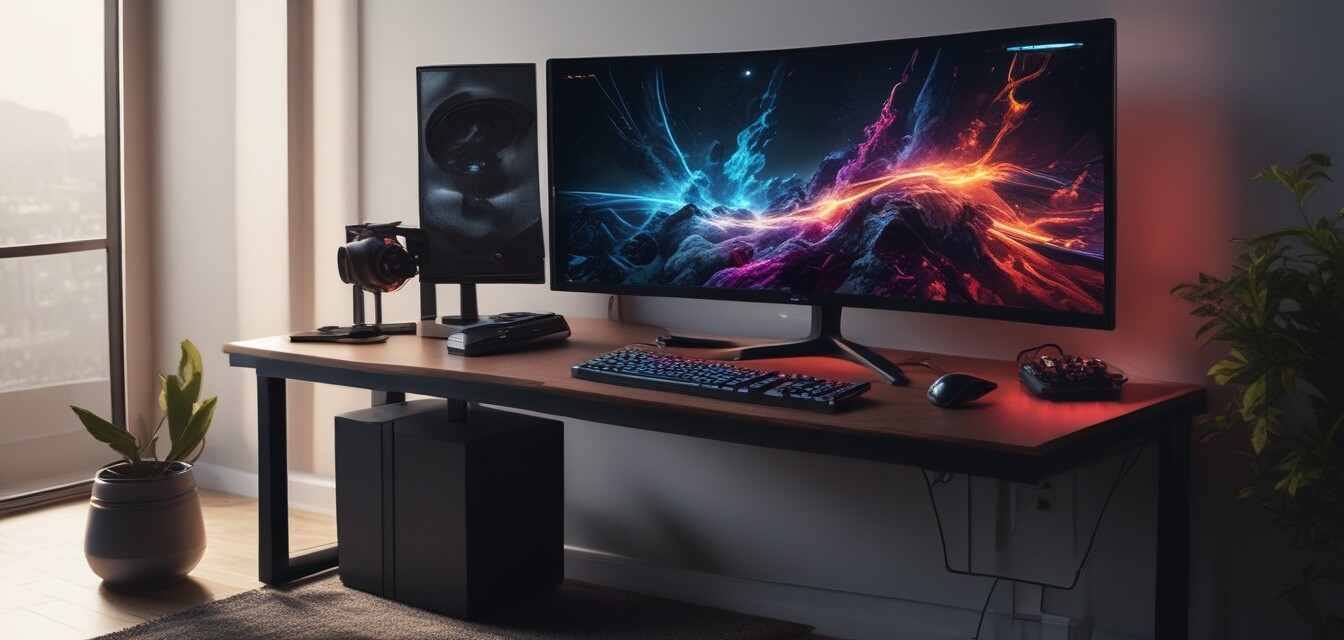
Essential Cable Management Tips for Your OLED Gaming Setup
Key Takeaways
- Effective cable management enhances aesthetics and durability.
- Use cable ties and sleeves to group cables properly.
- Consider cable management boxes for easy organization.
- Attach cables to furniture for a cleaner look.
- Position power strips strategically to reduce visible cables.
In the world of gaming, your setup can make all the difference. Keeping it clutter-free not only boosts aesthetics but also enhances functionality. Here, we’ll explore effective cable management strategies to ensure your OLED gaming setup is tidy and organized.
Why cable management is important
Cable management is more than just a cosmetic concern. Here are a few reasons why it’s crucial:
- Improves airflow for better cooling.
- Reduces the risk of tripping hazards.
- Makes cleaning easier.
- Enhances overall appearance of the gaming space.
Top cable management strategies
1. Use cable ties and sleeves
Cable ties and sleeves are fantastic for keeping cables organized. Here’s how to use them:
- Group cables by type (power, video, audio).
- Use Velcro straps for easy adjustments.
- Add sleeves for protection and aesthetics.
2. Manage power strips effectively
Power strips can often contribute to cable clutter. Consider the following tips:
- Choose a power strip with USB ports to reduce wall adapter usage.
- Position power strips behind your setup to keep them out of sight.
- Label wires connected to your power strip for easier identification.
3. Incorporate cable management boxes
Cable management boxes can hide unsightly cables. Here’s how:
- Select a box that fits your power strip and excess cables.
- Place the box in a convenient location but out of the way.
- Keep frequently used cables accessible for easy access.
4. Utilize furniture features
Many desks and tables come with built-in cable management features. Here are some tips:
- Use cable clips attached to your desk to keep cables in place.
- Look for desks with cable trays for under-desk organization.
- Try routing cables through holes designed for cable management.
5. Add decorative elements
Consider integrating decorative elements that also serve a functional purpose:
- Use decorative boxes to contain excess cables without compromising aesthetics.
- Consider cable covers that blend with your decor.
- Use plants or furniture to camouflage cables if necessary.
Tools and accessories to effectively manage cables
Below is a list of common tools and accessories that can assist you in managing your cables:
| Tool/Accessory | Purpose |
|---|---|
| Cable ties | Used to bundle multiple cables together |
| Cable sleeves | For protecting and organizing cables |
| Cable management boxes | For hiding power strips and excess cables |
| Cable clips | For securing cables to furniture surfaces |
| Cable covers | To protect visible cables and enhance decor |
Common mistakes to avoid
As you set out to manage your cables, keep these common mistakes in mind to ensure you’re on the right path:
- Not labeling cables, making it hard to identify connections.
- Over-tying cables, which can damage them over time.
- Ignoring airflow, which can lead to overheating.
- Failing to regularly check cable condition and organization.
Conclusion
Mastering cable management is essential for any OLED gaming setup. By implementing these tips and strategies, you'll not only enhance the appearance of your gaming area but also improve its functionality. Whether you’re a casual gamer or a serious competitor, a neat setup allows you to focus on what truly matters: enjoying your game.
Pros
- Enhances the gaming setup's aesthetics.
- Improves functionality and cable accessibility.
- Reduces clutter and risk of tripping.
Cons
- Initial setup time required.
- Cost involved in purchasing management tools.
- Continuous maintenance needed for optimal results.
For more insights on optimizing your gaming experience, check out our buying guides section to stay updated on the essential features of OLED gaming monitors. You can also explore 4K OLED gaming monitors to enhance your visual experience.